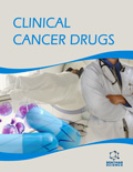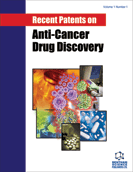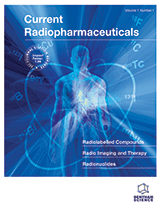Abstract
Glioblastoma is the most common primary brain tumor and one of the most devastating cancers. High-grade glioma patients’ prognoses are very poor, usually with a median survival of less than one year. Maximal neurosurgical resection followed by external adjuvant radiation therapy and chemotherapy is the conventional treatment for newly diagnosed high-grade glioma. Resistance to cytotoxic agents remains the greatest barrier to the successful treatment of human cancer. The alkylating agents temozolomide (TMZ), carmustine (BCNU), and lomustine (CCNU), which readily cross the blood-brain barrier, are the major chemotherapeutic candidates in glioma treatment, but many patients do not benefit from these drugs due to inherent or acquired resistance. We recently developed a two-phase treatment (2PT) aimed at eliminating drug resistant glioma cells by a second-phase treatment with a low concentration of salinomycin. In this study, we evaluated 1) the effect of prolonged exposure of clinically useful TMZ, BCNU, and CCNU on glioma cells; and 2) the fate of surviving cells as well as their sensitivity to a low concentration of salinomycin. We found that prolonged treatment with TMZ, BCNU, and CCNU induces a senescent-like state in the resistant cells, and that they then can be partially eliminated with a second-phase treatment of a low concentration of salinomycin.
Keywords: Glioma, brain tumors, alkylating agents, temozolomide, BCNU, CCNU, salinomycin, senescence, relapse.
Clinical Cancer Drugs
Title:Low Concentration of Salinomycin Prevents Regrowth and Partially Depletes Human Glioma Cells Surviving High Concentrations of Alkylating Agents
Volume: 1
Author(s): Zahid M. Delwar, Avramidis Dimitrios, Åke Siden, Mabel Cruz, Kajsa Paulsson and Juan Sebastian Yakisich
Affiliation:
Keywords: Glioma, brain tumors, alkylating agents, temozolomide, BCNU, CCNU, salinomycin, senescence, relapse.
Abstract: Glioblastoma is the most common primary brain tumor and one of the most devastating cancers. High-grade glioma patients’ prognoses are very poor, usually with a median survival of less than one year. Maximal neurosurgical resection followed by external adjuvant radiation therapy and chemotherapy is the conventional treatment for newly diagnosed high-grade glioma. Resistance to cytotoxic agents remains the greatest barrier to the successful treatment of human cancer. The alkylating agents temozolomide (TMZ), carmustine (BCNU), and lomustine (CCNU), which readily cross the blood-brain barrier, are the major chemotherapeutic candidates in glioma treatment, but many patients do not benefit from these drugs due to inherent or acquired resistance. We recently developed a two-phase treatment (2PT) aimed at eliminating drug resistant glioma cells by a second-phase treatment with a low concentration of salinomycin. In this study, we evaluated 1) the effect of prolonged exposure of clinically useful TMZ, BCNU, and CCNU on glioma cells; and 2) the fate of surviving cells as well as their sensitivity to a low concentration of salinomycin. We found that prolonged treatment with TMZ, BCNU, and CCNU induces a senescent-like state in the resistant cells, and that they then can be partially eliminated with a second-phase treatment of a low concentration of salinomycin.
Export Options
About this article
Cite this article as:
Delwar M. Zahid, Dimitrios Avramidis, Siden Åke, Cruz Mabel, Paulsson Kajsa and Yakisich Sebastian Juan, Low Concentration of Salinomycin Prevents Regrowth and Partially Depletes Human Glioma Cells Surviving High Concentrations of Alkylating Agents, Clinical Cancer Drugs 2014; 1 (1) . https://dx.doi.org/10.2174/2212697X113019990002
| DOI https://dx.doi.org/10.2174/2212697X113019990002 |
Print ISSN 2212-697X |
| Publisher Name Bentham Science Publisher |
Online ISSN 2212-6988 |
 28
28
- Author Guidelines
- Bentham Author Support Services (BASS)
- Graphical Abstracts
- Fabricating and Stating False Information
- Research Misconduct
- Post Publication Discussions and Corrections
- Publishing Ethics and Rectitude
- Increase Visibility of Your Article
- Archiving Policies
- Peer Review Workflow
- Order Your Article Before Print
- Promote Your Article
- Manuscript Transfer Facility
- Editorial Policies
- Allegations from Whistleblowers
- Announcements
Related Articles
-
The Glycogen Synthase Kinase-3 in the Regulation of Ion Channels and Cellular Carriers
Current Medicinal Chemistry Glycogen Metabolism and Brain Pathologies
Central Nervous System Agents in Medicinal Chemistry Spinophilin: A New Tumor Suppressor at 17q21
Current Molecular Medicine Therapeutic microRNA Delivery Strategies with Special Emphasis on Cancer Therapy and Tumorigenesis: Current Trends and Future Challenges
Current Drug Metabolism Image-Guided Photonic Energy Deposition for Cancer Ablation and Drug Delivery
Current Medical Imaging Targeting the Ataxia Telangiectasia Mutated Protein in Cancer Therapy
Current Drug Targets Advances in the Researches on the Biological Activities and Inhibitors of Phosphatidylinositol 3-kinase
Anti-Cancer Agents in Medicinal Chemistry The Potential Therapeutic Value of Renin-Angiotensin System Inhibitors in the Treatment of Colorectal Cancer
Current Pharmaceutical Design 3D-QSAR and Docking Studies of 4-morpholinopyrrolopyrimidine Derivatives as Potent mTOR Inhibitors
Letters in Drug Design & Discovery Involvement of Cysteine Proteases in Cancer
Current Medicinal Chemistry State of the Art Molecular Pharmacology, Pathogenesis and Epigenetics of 3 Major Cancers: Lung Cancer, Ovarian Cancer, and Gliomas
Current Molecular Pharmacology A Mini Review on Interactions Between Neural Stem Cells and Biomaterials
Recent Patents on Regenerative Medicine Integrins in Drug Targeting-RGD Templates in Toxins
Current Pharmaceutical Design Advances in Helper-Dependent Adenoviral Vector Research
Current Gene Therapy Recent Progress on Apoptotic Activity of Triazoles
Current Drug Targets Applications of Nanosystems to Anticancer Drug Therapy (Part II. Dendrimers, Micelles, Lipid-based Nanosystems)
Recent Patents on Anti-Cancer Drug Discovery Temozolomide: An Update on Pharmacological Strategies to Increase its Antitumour Activity
Medicinal Chemistry Reviews - Online (Discontinued) Radiolabelled Molecules for Imaging the Translocator Protein (18 kDa) Using Positron Emission Tomography
Current Medicinal Chemistry Critical Roles of EGFR Family Members in Breast Cancer and Breast Cancer Stem Cells: Targets for Therapy
Current Pharmaceutical Design Targetin g Human Tel omerase by Antisens e Oligonucleotides and Ribozymes
Current Medicinal Chemistry - Anti-Cancer Agents





















